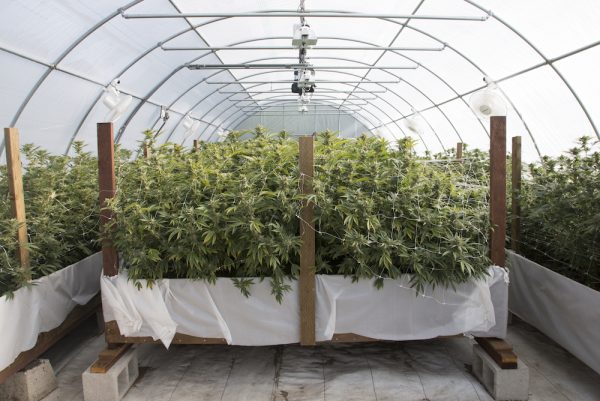

Accelerating Cannabis Growth With Carbon Dioxide
You’ll need more than a green thumb to be a bud tender. Raising cannabis plants in small growth centers or in large greenhouses is a meticulous and calculated process that requires a lot of technique.
Recently, greenhouse gardeners and growers have begun to implement additional Carbon Dioxide into their work, whether that’s raising fruits, vegetables, flowers or cannabis plants. Sealing greenhouses in the winter and investing in additional lighting have not produced noticeable results. The trick to accelerating plant growth is to circulate more parts per million (ppm) of CO2 into these environments through implementing ventilation systems. Adding the supplementary CO2 to cannabis grow rooms and greenhouse operations will accelerate yields by 10-25%, resulting in more harvests per year and a greater profit. Leaves can grow 30% larger in size with increased CO2 intake, which will compensate the need for more water, light and nutrients. This process will decrease the possibility and frequency of dry periods, creating mass production of healthy, thriving marijuana plants.

Two Carbon Dioxide Techniques
There are multiple techniques to utilizing CO2 in the cannabis industry, from CO2 bags to dry ice, but two methods continue to be the most common.
Compressed Liquid CO2: This strategy works best for grow rooms and small greenhouse operations. Cylinders are purchased from a local atmospheric gas distributor. These are convenient and safe to handle. There is also less risk of contaminants. The liquid gas is vaporized using steam, hot water or a vaporizer. Perforated tubes will be located above the plants, where the gaseous CO2 will descend, as CO2 is heavier than Oxygen. To prevent CO2 from raining down too harshly, the installation of air vents will disperse the gas throughout the space. With proper ventilation and airflow, this is the safest method as long as CO2 levels are monitored and do not reach an amount of ppm that could be lethal to workers (3,000 ppm and above).
Combustion of Propane and Natural Gases: This method is most common for larger greenhouses. CO2, heat and water are byproducts of the non-vented combustion of burning propane and natural gas. In winter, this technique takes the place of heating the building, but in summer must be counteracted with air conditioning. Despite the perk of a lower heating bill, this technique poses more risk to the plants and to humans. It can produce high levels of sulfuric acid, which will create burn spots on marijuana leaves or cause them to prematurely drop off of the plant. Carbon Monoxide and oxides of Nitrogen are also a byproduct, which are lethal atmospheric pollutants when inhaled. Purchasing gases with low sulfur content will reduce this risk.
Carbon Dioxide Distributors for the Cannabis Industry
At Rocky Mountain Air, we offer cryogenic liquid gas tanks and high-pressure cylinders of Carbon Dioxide for a variety of industries from food and beverage to agriculture. As a leading atmospheric gas distributor in the Rocky Mountain region, we are able to partner with the cannabis industry in Colorado. We have the capabilities to serve greenhouses and grow rooms across the state to accelerate cannabis growth, resulting in more yields per year, less dry periods and harvesting larger leaves.
At RMA we believe in flawless dependability, and our team is here to help you find solutions for your business. We can work with you to evaluate your usage and implement a delivery system that will be the most economical for your business, whether you need high-pressure cylinders for a small grow room, or a liquid CO2 tank for a larger greenhouse application. Contact your local branch today to speak with a representative. We look forward to serving you.



